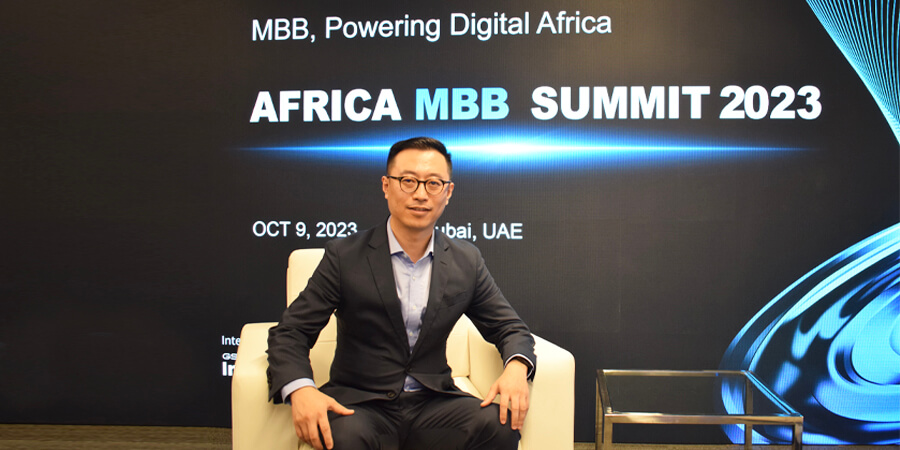In an exclusive interview with Telecom Review Africa, Dr. Philip Song, Chief Marketing Officer of Huawei Carrier BG, shared his insights on the transformative journey of 5G technology over the past four years, its impact on the global telecommunications landscape, and the unique considerations for its development in Africa.
Global 5G Industry Growth and African Trends
A lot of operators are interested in the development of the 5G industry, particularly in Africa. By August 2023, “over 265 global operators have launched 5G commercially, surpassing 1.3 billion connections and offering 1,700 devices for use. 5G's rapid progress globally has outpaced expectations,” Dr. Song stated.
Notably, 5G achieved in four years what 4G might have taken seven to eight. This technology has greatly benefited society, opening doors for consumers and enterprises alike. P2P connectivity has exceeded projections by 17-fold, underlining its impact. This leap forward from 3G and 4G promises an interconnected future.
In Africa, 4G and 5G will coexist, dominating mobile internet traffic for some time. It's advised to develop both in synergy for a smooth MBB network evolution.
Moreover, “National industry policies stand as key players in fostering the ICT sector.” To ensure the healthy development of 5G in Africa, governments should consider implementing incentive policies that strategically promote its growth and adoption. Dr. Song noted that “Spectrum allocation is pivotal for 5G development. Mainstream mid-bands such as C-band, TDD 2.6 GHz, and TDD 2.3 GHz, each with 80–100 MHz per operator, are recommended for optimal performance.”
In addition, pricing should be kept under 50% of 4G costs to facilitate widespread adoption, especially in regions like Africa, where the affordability of devices is vital.
“The true value of connectivity extends beyond mere connections; it lies in its contribution to the broader digital economy,” he said. Encouraging operators to deploy extensive 4G and 5G coverage can be a catalyst for economic growth. This emphasizes the critical role of spectrum allocation, which serves as the key to operators' expansion and digital economic progress.
Governments must also release full spectrum at affordable prices, enabling operators to accelerate economic growth through extensive network deployment. Striking the right balance between quantity and cost of spectrum is essential. In countries where operators can swiftly deploy base stations, reasonable spectrum prices play a pivotal role in alleviating financial pressure. Therefore, fostering an environment of accessible and affordable spectrum is a key driver for rapid progress.
Crafting Successful 5G Strategies
The cornerstone of carriers' business lies in ToC service. “With 5G promising ten times the network experience of 4G, it opens doors to a host of new services, including advanced 3D and immersive video experiences,” Dr. Song explained. This advancement is expected to drive growth in ARPU and DoU.
Furthermore, ToH service, known as fixed wireless access, offers a compelling solution for Africa. Currently, over 80% of households on the continent lack broadband connectivity. 5G fixed wireless access can swiftly bridge this gap, providing a fiber-like experience at a significantly lower cost compared to optical fiber.
In addition, ToB service presents a blue ocean opportunity for carriers, particularly in various vertical scenarios. Given Africa's abundance in mining and ports, there is immense potential for smart mining and smart port solutions, paving the way for industry digitalization in the future.
Green Initiatives in African Telecom
Africa, positioned at the crossroads of green development, stands to make a substantial impact on global markets and society at large. The initiative has already taken root with African operators, forging close collaborations to implement 100% renewable energy-based stations. This not only limits carbon emissions but also extends these solutions to remote, off-grid areas. Such dual advantages serve as powerful catalysts for operators and suppliers like Huawei to intensify their commitment to green and innovative solutions.
Dr. Song affirmed, “In line with COP27's ambitious goals, Africa is targeting a 43% reduction in GHG emissions by 2030 compared to 2019 levels. Within the telecom sector, sites represent the largest share of energy consumption. Carriers can enhance energy efficiency through streamlined site reconstructions and explore the substitution of traditional diesel generators with photovoltaic and energy storage solutions, unlocking further dividends in green development”.
Huawei remains dedicated to collaborating with customers and partners in driving continuous innovation to enhance energy efficiency per bit. This commitment aligns with the vision of achieving green ICT, enabling sustainable green development, and collectively building a more intelligent and environmentally conscious world.
